Nature has always whispered its secrets through the verses of masterful poets, creating bridges between classroom learning and environmental consciousness. For students navigating their academic journey from Class 6 through 12, English poems about nature serve as windows into both literary appreciation and ecological awareness. These carefully curated nature poems for students establish foundations for lifelong connections with our planet’s enduring beauty while developing critical thinking skills through progressive poetic complexity.
Class 6 English Nature Poems
Short Summary: These foundational nature poems for Class 6 students introduce young minds to environmental themes through accessible language, simple rhyme schemes, and vivid imagery that sparks imagination while building vocabulary and basic poetic understanding.
“The Rainbow” by William Wordsworth
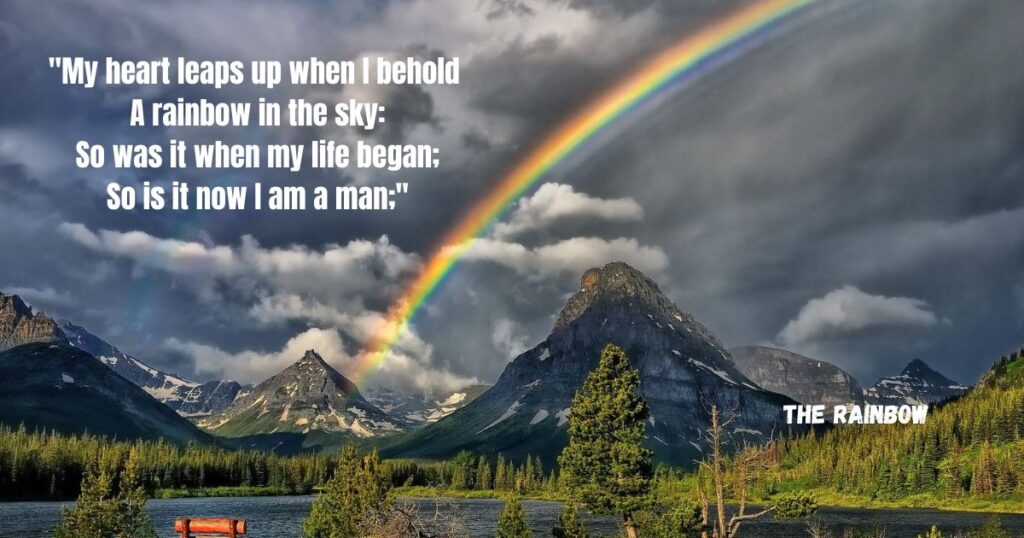
“My heart leaps up when I behold
A rainbow in the sky:
So was it when my life began;
So is it now I am a man;”
This enchanting verse captures the eternal wonder that natural phenomena inspire across all ages. Wordsworth’s rainbow represents hope, continuity, and the unbroken connection between childhood amazement and adult appreciation for nature’s spectacular displays.
“Trees” by Joyce Kilmer
“I think that I shall never see
A poem lovely as a tree.
A tree whose hungry mouth is prest
Against the earth’s sweet flowing breast;”
Kilmer’s celebration of earth’s gentle giants introduces students to personification while fostering environmental consciousness. The poem suggests that nature’s creations surpass human artistic achievements, encouraging humble appreciation for our planet’s living sculptures.
“The Wind” by Robert Louis Stevenson
“I saw you toss the kites on high
And blow the birds about the sky;
And all around I heard you pass,
Like ladies’ skirts across the grass—”
Stevenson transforms the invisible force of wind into a playful character, helping young readers understand how poets capture intangible natural elements. This verse develops sensory awareness while introducing metaphorical thinking through accessible comparisons.
More Posts:40+ Enchanting English Poems for Class 1 to 6 Students on Nature
Class 7 English Nature Poems
Short Summary: English nature poems for Class 7 advance students toward sophisticated environmental themes through emotional connections, advanced vocabulary, and deeper exploration of humanity’s relationship with the natural world’s transformative power.
“Daffodils” by William Wordsworth
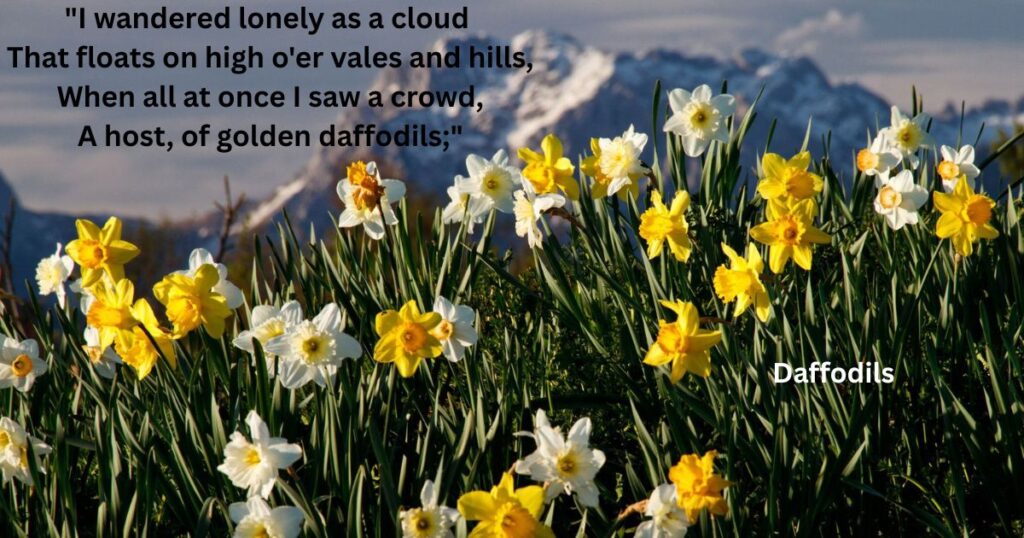
“I wandered lonely as a cloud
That floats on high o’er vales and hills,
When all at once I saw a crowd,
A host, of golden daffodils;”
This iconic nature poem demonstrates how natural beauty creates lasting memories that comfort us during difficult times. Wordsworth’s dancing daffodils illustrate nature’s therapeutic qualities, showing students how environmental experiences become emotional treasures stored within our hearts.
“The Brook” by Alfred Lord Tennyson
“I come from haunts of coot and hern,
I make a sudden sally
And sparkle out among the fern,
To bicker down a valley.”
Tennyson’s personified brook speaks directly to readers, sharing its eternal journey from mountain source to river mouth. This poem connects geography with literature while demonstrating how water’s continuous cycle mirrors life’s persistent forward movement through changing landscapes.
“Stopping by Woods on a Snowy Evening” by Robert Frost
“Whose woods these are I think I know.
His house is in the village though;
He will not see me stopping here
To watch his woods fill up with snow.”
Frost’s contemplative winter scene introduces students to symbolic interpretation within natural settings. The snowy woods represent both nature’s peaceful solitude and life’s momentary pauses before returning to responsibility’s demanding path.
More Posts:40+ Famous English Poems For Class 1 to 6 Recitation Competition
Class 8 English Nature Poems
Short Summary: Nature poems for Class 8 students explore cultural connections to environment, therapeutic qualities of natural experiences, and nostalgic longing for simpler life closer to earth’s rhythms and seasonal patterns.
“The Solitary Reaper” by William Wordsworth

“Behold her, single in the field,
Yon solitary Highland Lass!
Reaping and singing by herself;
Stop here, or gently pass!”
This Scottish Highland scene merges human activity with natural landscape, demonstrating how traditional folk cultures remain intimately connected to environmental cycles. The reaper’s song becomes part of nature’s symphony, showing students how human creativity harmonizes with agricultural rhythms.
“Dust of Snow” by Robert Frost
“The way a crow
Shook down on me
The dust of snow
From a hemlock tree”
Frost’s minimalist masterpiece proves that profound meaning exists within small natural moments. A simple interaction between crow, snow, and tree transforms the speaker’s entire day, teaching students to recognize nature’s power to shift perspectives through unexpected encounters.
“The Lake Isle of Innisfree” by W.B. Yeats
“I will arise and go now, and go to Innisfree,
And a small cabin build there, of clay and wattles made:
Nine bean-rows will I have there, a hive for the honey-bee,
And live alone in the bee-loud glade.”
Yeats’ yearning for natural escape from urban civilization resonates with modern students facing technology’s overwhelming presence. The poem’s detailed vision of simple island living demonstrates how nature provides refuge from life’s complications and stress.
More Posts:30+ English Poems for Class 3 on Nature
Class 9 English Nature Poems
Short Summary: English poems about nature for Class 9 examine life choices through environmental metaphors, weather’s emotional resonance, and nature’s dual capacity for both destructive force and creative renewal in human experience.
“The Road Not Taken” by Robert Frost
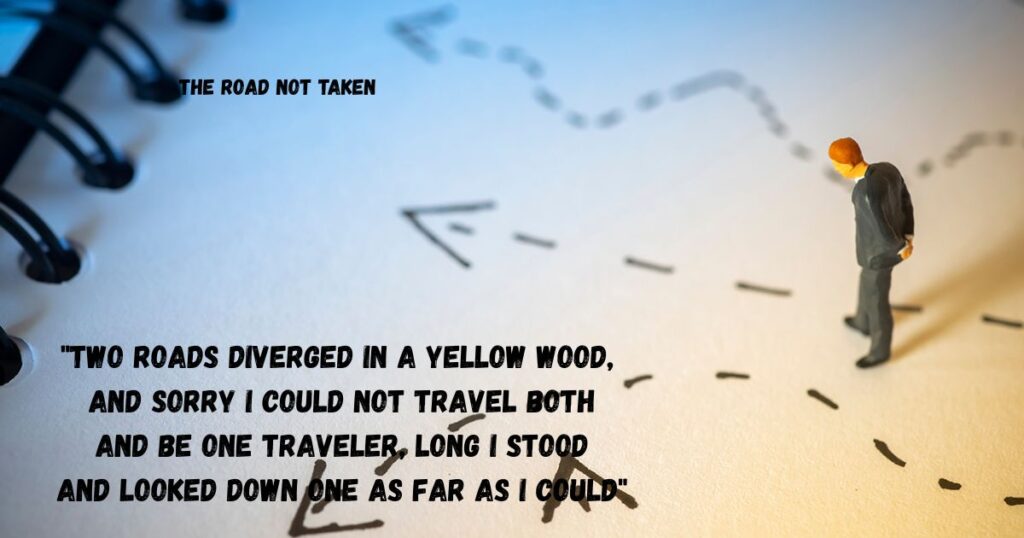
“Two roads diverged in a yellow wood,
And sorry I could not travel both
And be one traveler, long I stood
And looked down one as far as I could”
Frost’s famous crossroads uses forest paths to represent life’s crucial decisions. The natural setting becomes a metaphor for choice’s complexity, showing students how environmental imagery can illuminate abstract concepts about personal growth and individual destiny.
“Rain on the Roof” by Coates Kinney
“When the humid showers gather
Over all the starry spheres
And in thousand dreamy fancies
Into my heart’s fond hopes and fears”
Kinney’s melodious rainfall triggers powerful childhood memories, demonstrating weather’s ability to transport consciousness across time. The poem teaches students how natural sounds can unlock emotional depths and connect present experiences with treasured past moments.
“Wind” by Subramania Bharati
“Wind, come softly.
Don’t break the shutters of the windows.
Don’t scatter the papers.
Don’t throw down the books on the shelf.”
Bharati’s powerful wind represents both destruction and strength, challenging readers to build resilience against life’s storms. This Indian English poem demonstrates how environmental forces test human determination while offering opportunities for growth through adversity.
More Posts:40+ Famous English Poems For Class 1 to 6 Recitation Competition
Class 10 English Nature Poems
Short Summary: Nature poems for Class 10 students address conservation themes, animal rights perspectives, environmental activism, and the contrast between wild freedom and human-imposed captivity within modern civilization’s constraints.
“A Tiger in the Zoo” by Leslie Norris

“He stalks in his vivid stripes
The few steps of his cage,
On pads of velvet quiet,
In his quiet rage.”
Norris contrasts the caged tiger’s frustration with natural wildness, raising questions about conservation ethics and animal rights. The poem powerfully illustrates how captivity diminishes nature’s magnificent creatures, encouraging students to consider wildlife preservation’s moral dimensions.
“How to Tell Wild Animals” by Carolyn Wells
“If ever you should go by chance
To jungles in the east;
And if there should to you advance
A large and tawny beast,”
Wells combines humor with natural education, creating memorable lessons about wildlife identification. This light verse demonstrates how poetry can make environmental learning enjoyable while respecting nature’s power and encouraging responsible wilderness encounters.
“The Trees” by Adrienne Rich
“The trees inside are moving out into the forest,
the forest that was empty all these days
where no bird could sit
no insect hide”
Rich’s metaphorical trees represent liberation from artificial constraints, suggesting environmental activism through symbolic imagery. The poem encourages students to consider how nature reclaims spaces from human control, demonstrating resilience and the natural world’s persistent life force.
More Posts:25+ Broken Heart Poems That Make You Cry
Class 11 English Nature Poems
Short Summary: English nature poems for Class 11 explore environmental challenges through adventure literature, detailed ecosystem observations, and transcendentalist philosophy that personifies natural elements within cyclical patterns.
“We’re Not Afraid to Die… If We Can All Be Together” by Gordon Cook
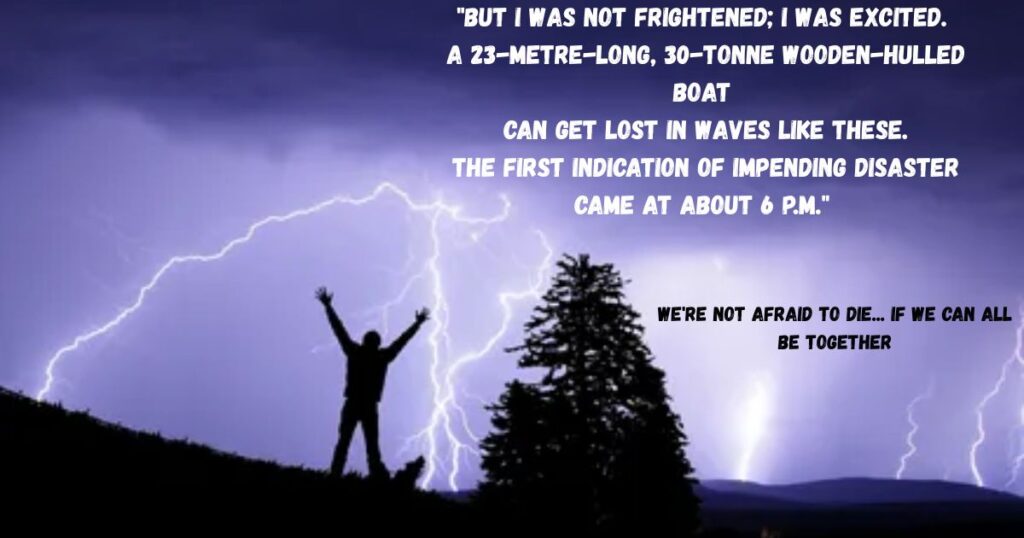
“But I was not frightened; I was excited.
A 23-metre-long, 30-tonne wooden-hulled boat
Can get lost in waves like these.
The first indication of impending disaster came at about 6 p.m.”
Cook’s maritime adventure demonstrates nature’s overwhelming power when humans venture into its domain. The family’s struggle against oceanic forces teaches students about environmental respect while exploring how natural challenges can strengthen human bonds through shared adversity.
“The Laburnum Top” by Ted Hughes
“The Laburnum top is silent, quite still
In the afternoon yellow September sunlight,
A few leaves yellowing, all its seeds fallen.
Till the goldfinch comes, with a twitching chirrup”
Hughes’ detailed ecosystem observation captures the intricate relationship between trees and birds within seasonal cycles. The goldfinch’s arrival transforms the quiet laburnum into vibrant life, demonstrating how interconnected natural systems depend upon each species’ participation.
“The Voice of the Rain” by Walt Whitman
“And who art thou? said I to the soft-falling shower,
Which, strange to tell, gave me an answer, as here translated:
I am the Poem of Earth, said the voice of the rain,
Eternal I rise impalpable out of the land and the bottomless sea”
Whitman’s personified rain speaks directly about its eternal cycle, embodying transcendentalist philosophy that finds divine consciousness within natural processes. The rain describes itself as Earth’s poetry, teaching students to recognize nature’s artistic and spiritual dimensions.
More Posts:Class 12th English Appreciation of All Poems
Class 12 English Nature Poems
Short Summary: Nature poems for Class 12 students connect human aging with natural cycles, contrast environmental freedom with social constraints, and advocate environmental mindfulness through contemplative silence and ecological stewardship.
“My Mother at Sixty-Six” by Kamala Das

“Driving from my parent’s home to Cochin last Friday
morning, I saw my mother, beside me,
doze, open mouthed, her face ashen like that
of a corpse and realized with pain”
Das connects her aging mother’s mortality with natural imagery, using pale morning light and seasonal metaphors to explore time’s passage. The poem demonstrates how environmental observations can illuminate profound emotional truths about family relationships and human vulnerability.
“An Elementary School Classroom in a Slum” by Stephen Spender
“Far far from gusty waves these children’s faces.
Like rootless weeds, the hair torn round their pallor,
The tall girl with her weighed-down head. The paper-
seeming boy, with rat’s eyes.”
Spender contrasts natural freedom with poverty’s constraints, using environmental imagery to highlight social injustice. The poem suggests that all children deserve access to nature’s beauty and educational opportunities that can transport them beyond their circumstances.
“Keeping Quiet” by Pablo Neruda
“Now we will count to twelve
and we will all keep still.
For once on the face of the earth
let’s not speak in any language”
Neruda advocates environmental mindfulness through contemplative silence, suggesting that human activity’s constant noise prevents understanding nature’s wisdom. The poem encourages students to practice stillness as a form of ecological meditation and planetary healing.
Conclusion
These English poems for Class 6 to 12 students on nature create an educational journey that weaves environmental consciousness with literary mastery, guiding young minds through increasingly sophisticated encounters with our natural world. From Wordsworth’s dancing daffodils to Neruda’s contemplative silence, these carefully selected verses build both linguistic competency and ecological awareness while establishing foundations for lifelong appreciation of literature and environmental stewardship. Through this progressive exploration, students develop critical thinking skills while nurturing their essential connection to Earth’s enduring beauty and fragility.

Admin of https://aspirenowa.com/. Sharing Touching and Thoughtful Poems for all Hearts. I Believe in Simple Words, Deep Meaning, and Inspiring Emotions through Poetry for Every Reader.
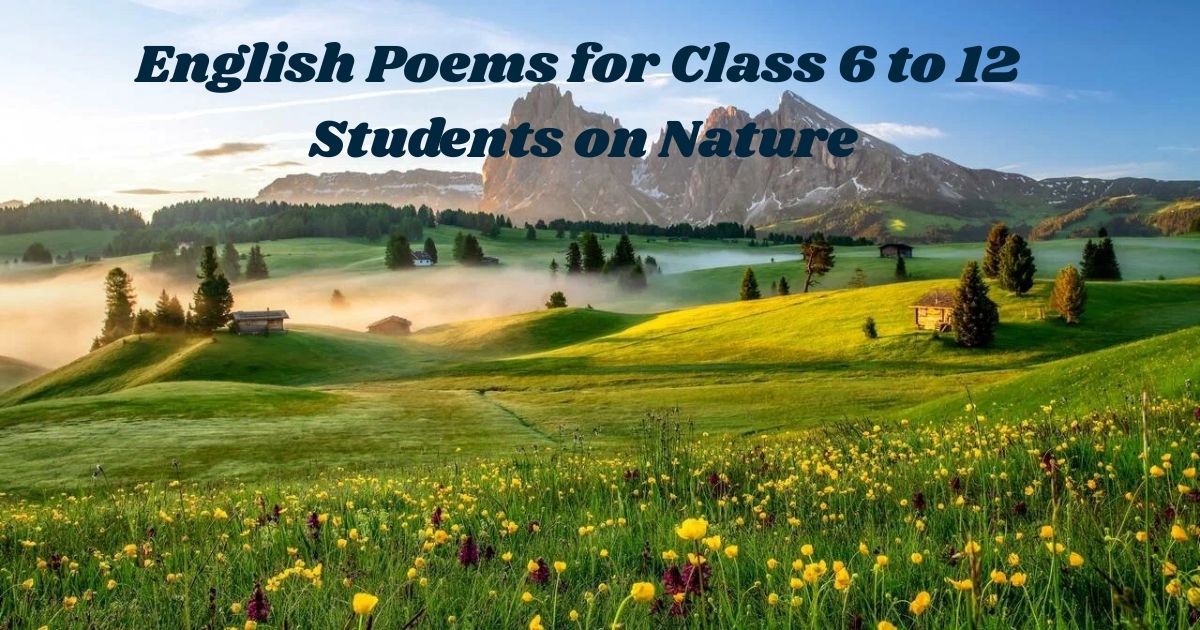









275+ Comment on Your Friend’s Instagram Post for Love, Fun & Friendship